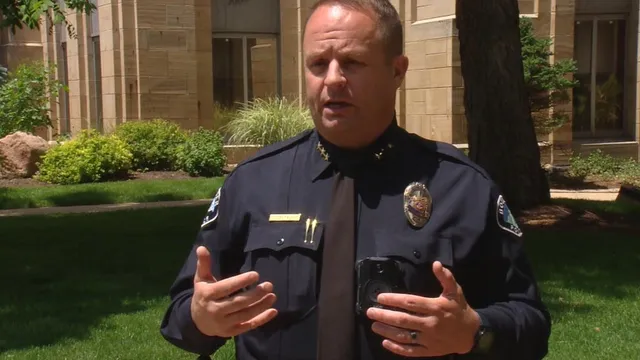
Multiple injured in targeted attack during Jewish event in Boulder
2025-06-04 21:34- A man armed with a weapon set people on fire during a peaceful Jewish community gathering in Boulder, Colorado.
- Local law enforcement confirmed several injuries and took the suspect into custody without incident.
- The incident has been labeled a targeted terror attack, raising concerns about antisemitism and public safety.
Express your sentiment!
Insights
In Boulder, Colorado, a disturbing incident unfolded on Sunday, resulting in multiple injuries during a weekly event organized by members of the Jewish community. The attack occurred at the courthouse near Pearl Street Mall around 1:30 p.m. local time, where demonstrators advocating for the release of hostages held in Gaza were gathered. Eyewitness accounts report that a man employed a weapon to set attendees on fire, leading to chaos and multiple victims suffering severe injuries from burns. Law enforcement promptly responded to numerous 911 calls detailing the situation. Boulder Police Chief Stephen Redfearn stated that several victims required hospitalization for injuries ranging from serious to minor, while the suspect, who has been described as an adult male, was taken into custody without resistance and similarly received treatment for minor injuries. Evacuations of the surrounding area were implemented to secure the scene for ongoing investigations, with a vehicle of interest also being assessed by authorities. The event, entitled “Boulder Run for Their Lives,” featured peaceful demonstrators seeking to raise awareness about the plight of hostages, and the situation has spurred significant concern regarding rising antisemitic violence in the United States. The FBI is actively investigating the incident, classifying it as a “targeted terror attack,” while local law enforcement continues to exercise caution regarding the motives behind the assault. The circumstances raise troubling questions about safety amid increasing tensions surrounding the Israeli-Palestinian conflict. As investigators work to gather more details, there have been public expressions of outrage, including statements from Colorado Governor Jared Polis condemning the violence as a “heinous act of terror.” The Anti-Defamation League has acknowledged the incident as particularly alarming given its context. As the investigation progresses, many in the community are left grappling with the implications of this attack, especially as it follows a rise in violence against Jewish individuals in various parts of the country.
Contexts
The response of law enforcement agencies in the United States to terror attacks has evolved significantly over the years, shaped by the increasing complexity and frequency of threats. A pivotal moment in this development was the tragic events of September 11, 2001, which led to a comprehensive reevaluation of national security measures. In the aftermath, various agencies at both federal and local levels, including the FBI, Department of Homeland Security (DHS), and local police departments, coordinated their efforts to enhance intelligence sharing and improve resource allocation. The establishment of fusion centers, designed to facilitate collaboration between different law enforcement bodies on threat assessment and response, is a testament to this shift. These centers serve as crucial hubs for gathering, analyzing, and disseminating information about potential threats, ensuring a more unified and timely reaction to incidents of terrorism. The introduction of counterterrorism strategies has also seen an increased focus on community engagement, aimed at preventing radicalization and fostering resilience against extremist ideologies. Law enforcement agencies have recognized the importance of building trust within communities, allowing for more effective communication and collaboration. Programs that promote public awareness about identifying suspicious activities and reporting them have been implemented throughout the country. Additionally, educational initiatives aimed at youth are designed to counteract extremist narratives before they can take root, creating a more proactive approach to safeguarding communities from the influences of terrorism. Moreover, technological advancements have played a crucial role in modernizing police responses to terror threats. The integration of sophisticated data analysis software, real-time surveillance systems, and social media monitoring tools has enabled law enforcement to stay ahead of potential threats. These technologies facilitate the rapid identification of emerging patterns or networks associated with terrorist activities, allowing for timely interventions. The use of predictive analytics has also shifted the paradigm from reactive to preventive measures, underscoring a significant transformation in how agencies prepare for and combat threats. This technological embrace, however, raises concerns about privacy and civil liberties, prompting ongoing discussions about the balance between security measures and individual rights. While the police response to terror attacks has undoubtedly improved, challenges remain. The evolving nature of terrorism, including the rise of lone-wolf attacks and domestic extremism, compels law enforcement to continually adapt their strategies. The increasing accessibility of radical content through online platforms has further complicated the landscape, necessitating enhanced capabilities for monitoring and intervention. As law enforcement agencies navigate these complexities, continued investment in training, resources, and community partnerships will be crucial. The aim is not only to respond effectively to potential threats but also to foster a preventative mindset, ensuring that communities remain vigilant and resilient in the face of evolving threats.